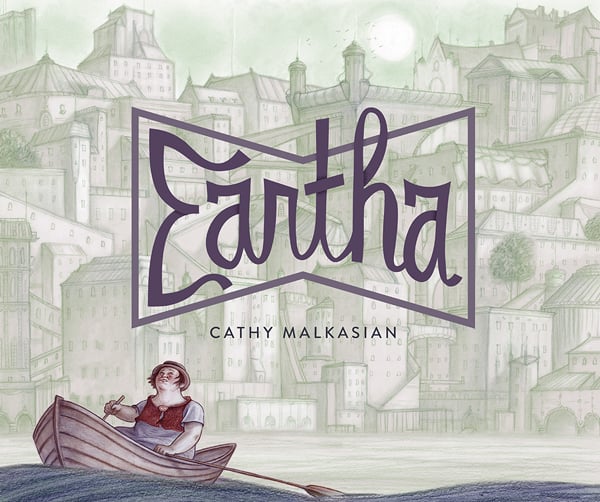You’re not likely to come out of a Cathy Malkasian book without being spooked by something you can’t quite put your finger on even though it lingers and gets you a little bit down. Malkasian has cornered the market on gloomy, apocalyptic parables that don’t make you feel so great about humankind even as you melt in the presence of their beauty. Eartha is no departure, but it does present a particularly complicated infrastructure to its fable-like tone.
Eartha lives in Echo Fjord, where the dreams of city-dwellers wander to play out their existence past the point they are of any use to those who sleep and conceive of them. The people of the town guide the dreams to their final moments and they inhabit the sort of absurd land you’d expect of a place that finds the walking dreams of strangers to just be part of the everyday landscape.
But when the dreams stop coming, Eartha eventually takes it upon herself to go and visit the city, to find out what has happened to the dreams, at least as a bonus to her pursuit of smoke sticks for her friend Lloyd. There she finds the city dwellers have become preoccupied by the ubiquity of information biscuits that they gorge themselves on and which keep them from tuning out of the world long enough to relax.
This is obviously a metaphor for the 21st Century experience of taking in information, a situation that has the amount of data going on burdening the passages of anything on its way out, at least in theory. This ignores that some people might be perfectly capable of matching output with input, while others might never have had output of any relevance anyhow, but it’s a point well taken, particularly in context of the idea that a flood of information, specifically current events, eventually ceases to be knowledge and serves mostly as a source of anxiety that can do anything from divert to cripple.
When confronted with this reality, Eartha isn’t quite sure what to do about, though she’s pretty confident that it isn’t healthy, especially as she contends with a team of men called Bouncers pushing the biscuits on city dwellers and convincing them that the immediate knowledge of current events that the biscuits bring is worth the sacrifice of their more personal pursuits and self-centered thinking.
Eartha eventually gets to the bottom of things and uncovers the history of the biscuits, the origin of the Bouncers, the story of the man who brought the situation upon the city, and even some of her own family secrets, but obviously filtered through Malkasian’s penchant for allegory and realized via her unique artistic style that evokes some sort of nostalgic futurism like you might find in works from behind the Iron Curtain. Her visuals create a similar kind of sparse confinement, an emptiness drenched in gray that portray a haunted world, but in the case of Eartha, there is some hope in the end.







